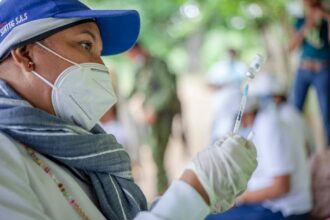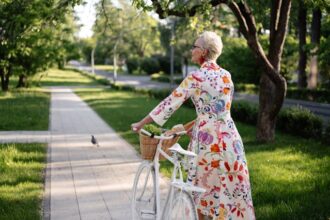A recent Virginia Tech study has drawn attention to the important yet often unrecognised role that nieces and nephews play in caring for ageing relatives living with dementia. Published in The Gerontologist, the study is the first to offer a focused examination of dementia caregiving by extended family members beyond the usual scope of spouses and adult children. Led by Dr Tina Savla and Dr Karen Roberto, the research forms part of the broader CareEx project funded by the National Institutes of Health. The findings reveal that many of these caregivers never expected to assume such a role, but instead stepped into it out of necessity and familial affection, often with little preparation or support.
Dr Savla, a professor of human development and family science, noted that this sudden shift into caregiving reflects both deep empathy and considerable strain. “That spontaneity shows extraordinary love and empathy while masking a lot of real stress,” she explained. “They carry all of the responsibilities associated with primary caregiving while also managing their households, children, and work.” The study highlights the complexity of modern caregiving dynamics, in which nieces and nephews must balance competing demands on their time, finances, and emotional well-being—while providing consistent, often intensive support to relatives with cognitive decline.
The participants, comprising 20 nieces and five nephews aged between 38 and 67, were located across several states, including Virginia, Maryland, and North Carolina. All either lived with their relatives or maintained close contact, typically visiting at least three times a week. Interviews conducted between 2021 and 2025 explored how these individuals became caregivers, the nature of the care they provide, and the impact of this experience on their quality of life. Many of them had lifelong relationships with their aunts and uncles, formed through strong generational bonds. This emotional foundation was a powerful motivator in their willingness to take on such a demanding role, often rooted in a sense of gratitude and moral responsibility.
“Many participants told us, ‘I’m just paying back the love my aunt showed me when I was a kid,’” said Savla, who also serves as core faculty at Virginia Tech’s Centre for Gerontology. This sense of reciprocity, the study suggests, provides a resilience that can sometimes surpass the more transactional nature of obligatory care. Yet even with such heartfelt motivation, the practical challenges remain significant. Like traditional caregivers, these extended family members must handle a range of responsibilities—organising transport to medical appointments, managing medications and finances, assisting with daily tasks, and navigating complex healthcare systems—often with limited access to formal resources or recognition.
To better understand the intricacies of this caregiving role, Savla and Roberto identified four major themes across the interviews: relationship foundations, pathways to caregiving, care systems, and the trials and tribulations associated with caregiving. These categories shed light on how past personal histories shape caregiving responsibilities, how caregivers adapt (or struggle to adapt) to their new roles, and the types of support systems—or lack thereof—that impact both their experience and effectiveness. The study makes a significant contribution to the field by demonstrating that caregiving is not limited to nuclear family structures and that extended relatives are a vital yet underexplored aspect of the care landscape.
With America’s ageing population growing and dementia diagnoses on the rise, the researchers argue that understanding extended caregiving dynamics is more urgent than ever. Current policies and research often overlook the diversity of caregiving arrangements, focusing instead on more traditional family roles. Moving forward, Savla and Roberto plan to broaden their scope by including adult grandchildren and siblings in future phases of the study. “Understanding the contributions of extended family caregivers provides a more complete picture of the family caregiving ecosystem,” Roberto explained. “Learning about their experiences will help identify unmet care needs and guide interventions to sustain caregiver wellbeing—ultimately improving outcomes for both carers and the individuals they support.”
More information: Tina Savla et al, Niece and Nephew Dementia Caregivers: Family Relationships and Care Dynamics, The Gerontologist. DOI: 10.1093/geront/gnaf154
Journal information: The Gerontologist Provided by Virginia Tech








